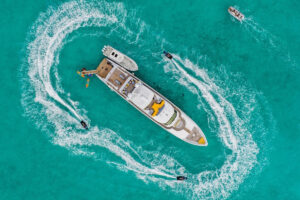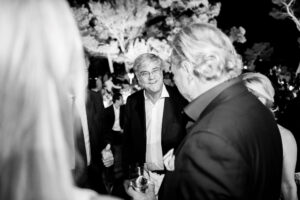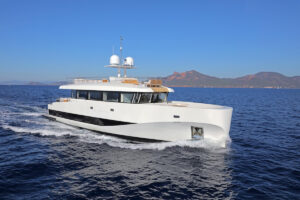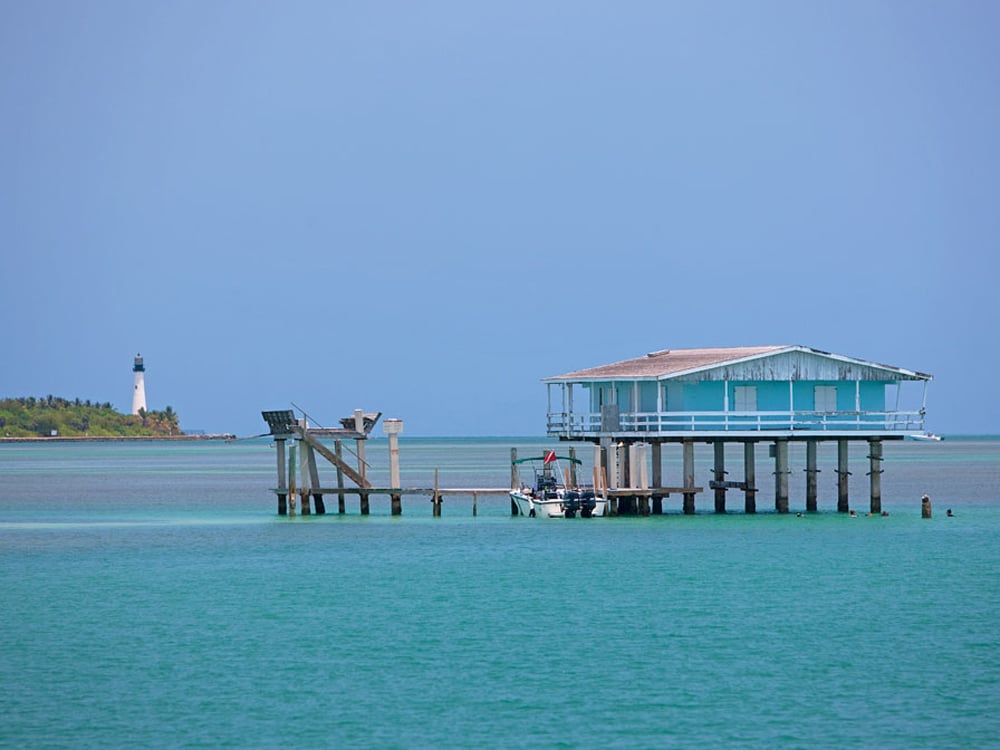
It’s as predictable as Florida’s fall migration of snowbirds. When committed yachties retire, many feel compelled to take a slow boat in a “Great Loop” — up the East Coast, through the lakes and down the Mississippi. While I have not yet developed a taste for early-bird specials, this winter I had the urge to wander in a loop without the risk of another adventure at sea. Since dodging barges and stumps in fog on Ol’ Man River had no appeal, I began noodling a short cut — a “Little Loop”!
We would depart Stuart, Florida, heading up the St. Lucie River to transit the Okeechobee Waterway across the lake to the Caloosahatchee River and Fort Myers, 115 nautical miles. We would head north into Pine Island Sound to Captiva, another 25 nautical miles. From Captiva we would head down the Gulf of Mexico to Key West, 125 nautical miles; Key West to Islamorada, 82 nautical miles; and from Islamorada back to Stuart, 160 nautical miles. The route crosses some of the finest cruising waters in the United States, and there are so many great destinations along the way that my crew began debating the possibilities. Aboard Anhinga “the Captain” (me) steers and “the Admiral” (wife Nelia) chooses the direction. My son Casey chose to follow (most of the time) in our 18-foot Hewes skiff.
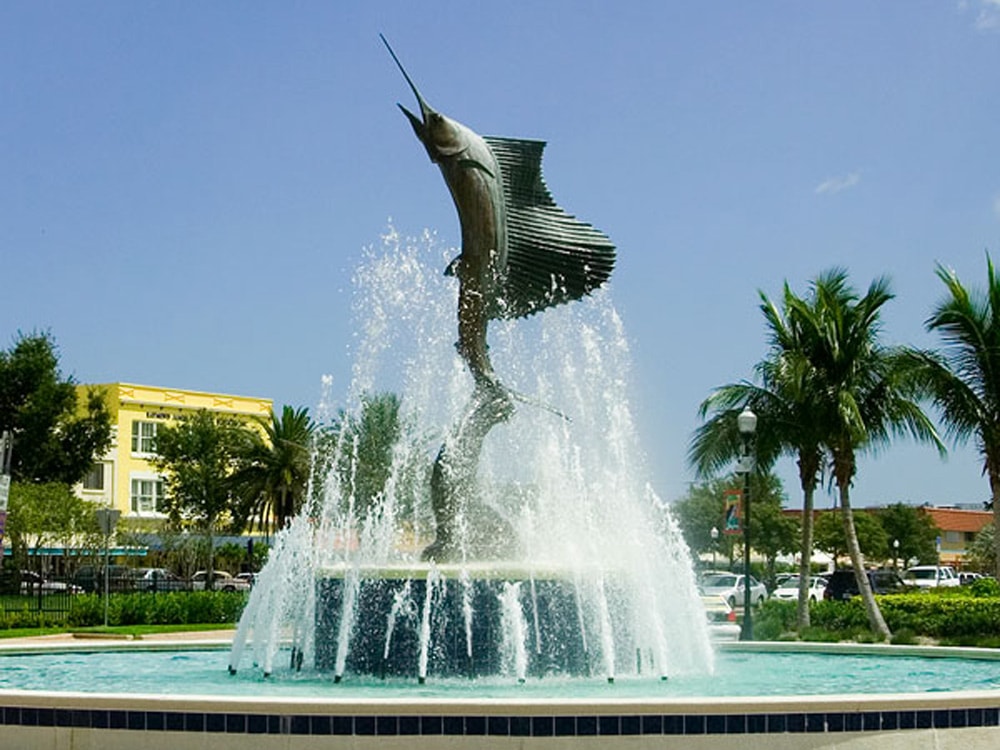
Part I: Stuart, Florida
The U.S. Army Corps of Engineers opened the Okeechobee Waterway in 1937, connecting Florida’s east and west coasts. Stuart is the perfect point of embarkation, and I suggest spending at least a night at Sunset Bay Marina & Anchorage. Whether dockside or swinging on a mooring, you are walking or rowing distance from “old town.” The small shops and restaurants range from quaint to upscale. Try the Black Marlin for exceptional tavern fare and Gusto for authentic Italian cooking. If you have more time to spend ashore, visit a few of the half-dozen custom tournament boatbuilders in town. Stuart is, after all, the “Sailfish Capital of the World.”
The St. Lucie lock is about six nautical miles from town, and we were on hand for the 9 a.m. opening. If you are crossing, checking the lake level is a must. In our case the channel was limited to about a five-foot draft and the St. Lucie lock (Stuart) and Franklin lock (Fort Myers) were on two-hour schedules. The three locks in between were all operating on demand. There are two routes across Okeechobee. The rim route around the southern edge of the lake is primitive (lots of gators) and scenic (lots of swamp) and worth the extra miles. However, since water was precious, we chose the deeper, more direct route across the lake to Clewiston.
If darkness falls during a crossing I recommend a stop at Roland Martin Marina in Clewiston. You will likely find an eclectic group of cruisers gathered around its country-and-western-flavored tiki bar. If you’re up early, guides are handy and the bass are enormous. We pushed on past Clewiston bound for the western half of the waterway. Along this stretch you will see the “other Florida” of cowboys and cattle, not condos and tourists. There are few transient berths on this leg, so timing is important. We were lucky, arriving at the Franklin lock for the 5 p.m. opening.
Part II: Fort Myers, Florida
Fort Myers Yacht Basin is on my short list of favored stops. It’s a public facility that delivers reasonably priced dockage and friendly service without an attitude. The dock office serves as a gathering place for cruisers and resident boaters to jawbone. It’s a short walk to downtown, and there are a number of decent dining choices. If you have the time, visit the Edison and Ford Winter Estates — it’s worth the cab fare. Here you will find the botanic research laboratory where Thomas developed rubber tires for Henry’s cars.
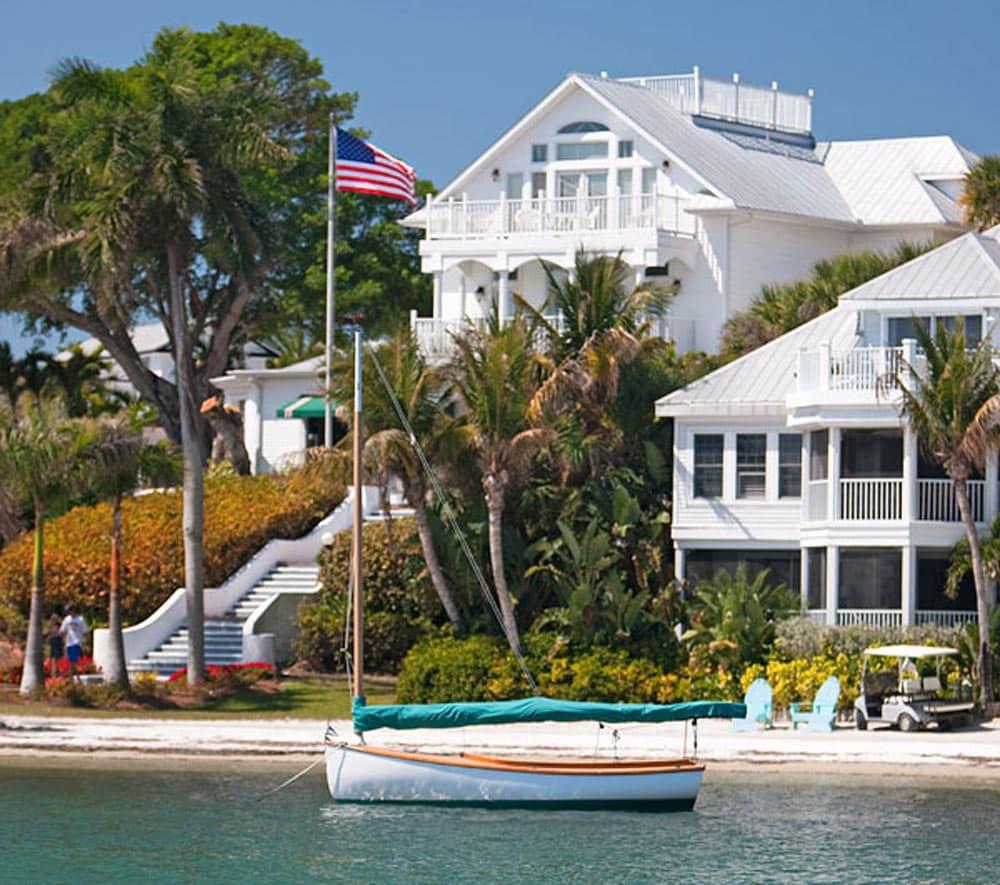
Part III: Pine Island Sound & Captiva Island, Florida
The run down the Caloosahatchee River and up Pine Island Sound is straightforward and pleasant. The South Seas Island Resort consumes the northern tip of Captiva Island. Formerly South Seas Plantation, it was nearly wiped off the map by Hurricane Charley in 2004. We last visited shortly after it reopened in 2006 and it was still a work in progress. Although the mangrove forests will take years to recover, a major beach re-nourishment project has paid off — the resort looks great. Veteran visitors should note that the channel into the marina has been moved and is no longer the straight shot I was tempted to try.
Armed with credit cards, my crew walked to the beach while I changed a hose — a poor choice! Bird-watching and shelling are best in the early morning since overstuffed guests are lounging under umbrellas by noon, taking advantage of the small beachside restaurant and bar. For those who feel compelled to whack a little white ball, the resort’s petite course is said to be one of the “top five short courses in the world.” I have no taste for the sport, but my crew coerced me into action. I will admit that playing barefoot at the edge of the Gulf is not so bad.
However, it is Pine Island Sound, not resort living, that draws us to this area. Boarding the Hewes skiff, we headed for the unspoiled beaches of Cayo Costa State Park. Here you may see a 150-pound tarpon patrolling the shallows or a wild hog routing on the beach for a seafood dinner. It’s yet another pleasant reminder of what Florida was once like. A stop at Cabbage Key for lunch is something of a tradition for us. The pint-size island is just a few miles away, and the former estate turned boating bar and restaurant is perched atop an ancient Indian shell mound. Rustic cottages and rooms are available.
The nearby Useppa Island Club is old Florida at its best. Abandoned by the Indians, pirates and confederates, Useppa Island became a haunt for anglers in the 1880s. Barron Collier purchased the island in 1911 and updated the inn to suit a more refined clientele. Vanderbilts, Rockefellers and Rothschilds all visited the island, and the CIA arrived in 1960 to prepare for the Bay of Pigs invasion. The island is private; however, nonmembers may visit for lunch from South Seas Island Resort aboard a Captiva Cruises vessel.
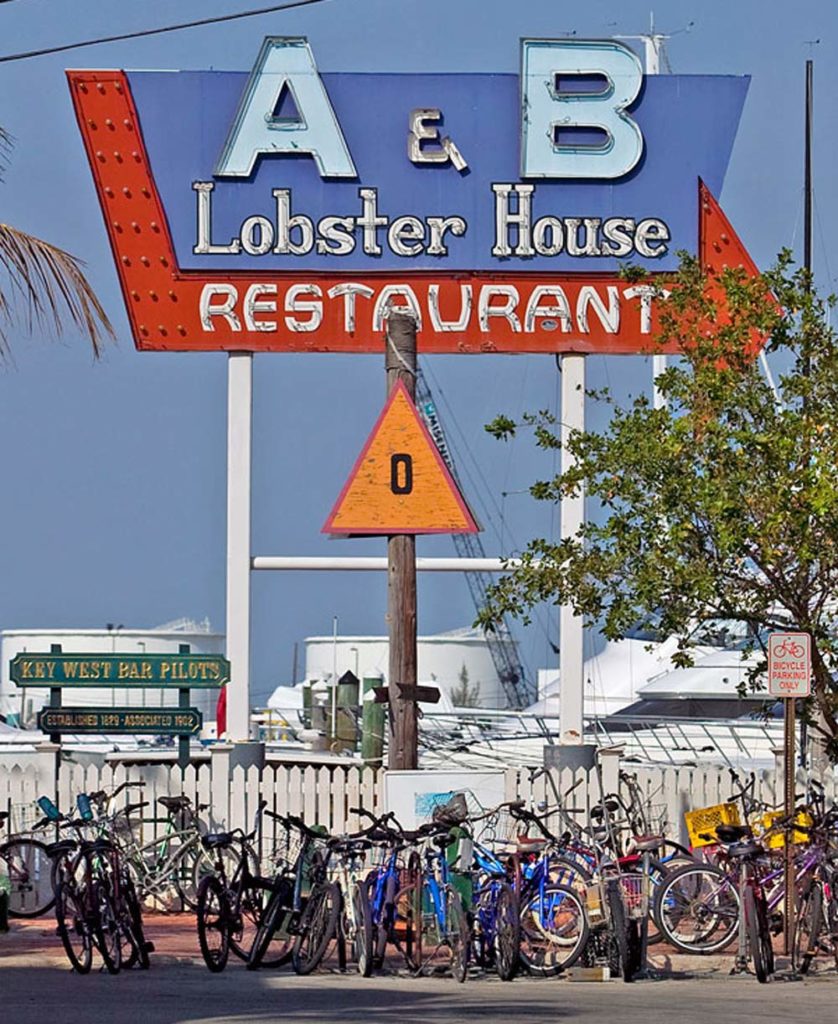
Part IV: Key West
Redfish Pass defines the northern tip of South Seas’ property and allows easy access to the Gulf. We cleared it just after sunup and headed straight for Key West. If the weather is challenging, I suggest running inside to Fort Myers. If the wind is out of the east, it is possible to run in the lee of the land down the coast to Cape Sable and along the edge of Florida Bay. Our passage was perfect and a pleasant change from typically choppy east coast fare.
Key West is approached easily from the Gulf or Hawk Channel on the Atlantic side. Called “Cayo Hueso” (Island of Bones) by Spanish explorers for its dismal Indian history, the English mottled the name into Key West. A melting pot for Cubans and Bahamians, the town has had its highs and lows as a center for wrecking, cigar-making and sponging. Today, tourism rules, and while the crowd can be overwhelming, it’s still my favorite spot in Florida. To find old Key West, avoid the temptations of Duval Street. Be a noob and buy a ticket on the conch train to get your bearings. There is something in this town for everybody, and I mean everybody, so check the local events calendar for the right fit! Good food is a short walk away. You can’t miss at the A&B Lobster House (upstairs), the Roof Top Café or the bar at Bagatelle. For decent music try the Hog’s Breath Saloon. We have stayed at most of the marinas and they’re all about the same: pricey. If you have a skiff, be sure to visit Woman Cay (11 nautical miles west) — the water is better than in the Bahamas!
Plus, visit the websites for Galleon Marina and A&B Marina.
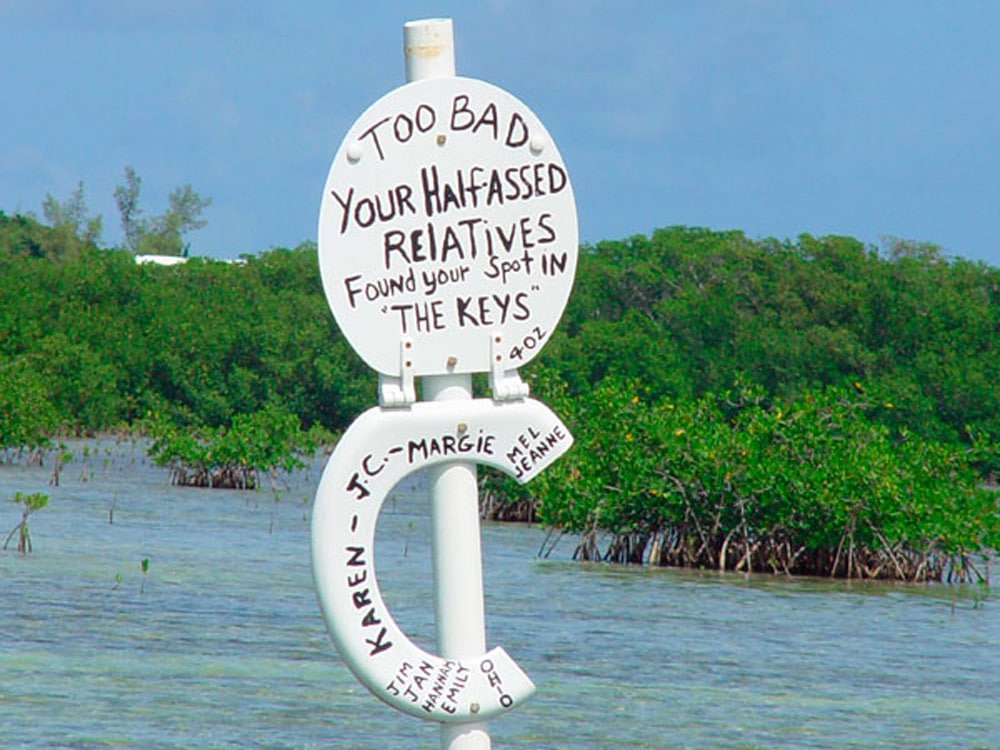
Part V: Islamorada
The run north to Islamorada inside the reef was sloppy — don’t underestimate Hawk Channel. Our pick for parking is always Plantation Yacht Harbor (bay side) in Founders Park. Mind the tide when passing through Snake Creek if you draw more than four feet. The park has a beach (rare in the Keys), tennis courts and a pool. The adjacent bay waters are gin clear in the summer and ideal for an afternoon swim. Food is a skiff ride away — try sunset at Marker 88. For a taste of local history and great food, check out the Hungry Tarpon at Robbie’s Marina. Its vintage bunkerlike construction was likely inspired by the devastating 1935 hurricane — a memorial to the storm is just a few miles away. While most visit the area to dive, a trip into the backcountry with rod or camera is a must. Try Capt. Matt at Bamboo charters.
I usually run from Islamorada to Stuart in one shot to avoid the big cities. With a draft of less than five feet, I run the inside route up Biscayne Bay and into the Atlantic at Cape Florida. If weather allows, I run north offshore, taking advantage of the Gulf Stream current. Should the weather be iffy, remember that Port of Miami, Port Everglades and Lake Worth inlets are only the “best choices” — don’t take ground swells for granted. I find Jupiter Inlet more difficult than Stuart’s St. Lucie Inlet, although lately it’s a tossup because St. Lucie is shoaling. If I stop along the way, Pier Sixty-Six in Fort Lauderdale or Sailfish Marina Resort in West Palm Beach usually get my vote.
Fortunately we were “weathered in” in Islamorada for weeks — a rum front! The point, however, is that epic cruises can be optimized and we could have pulled this one off comfortably in two or three weeks.
There you have it — a great loop you can enjoy cruising without being retired!

